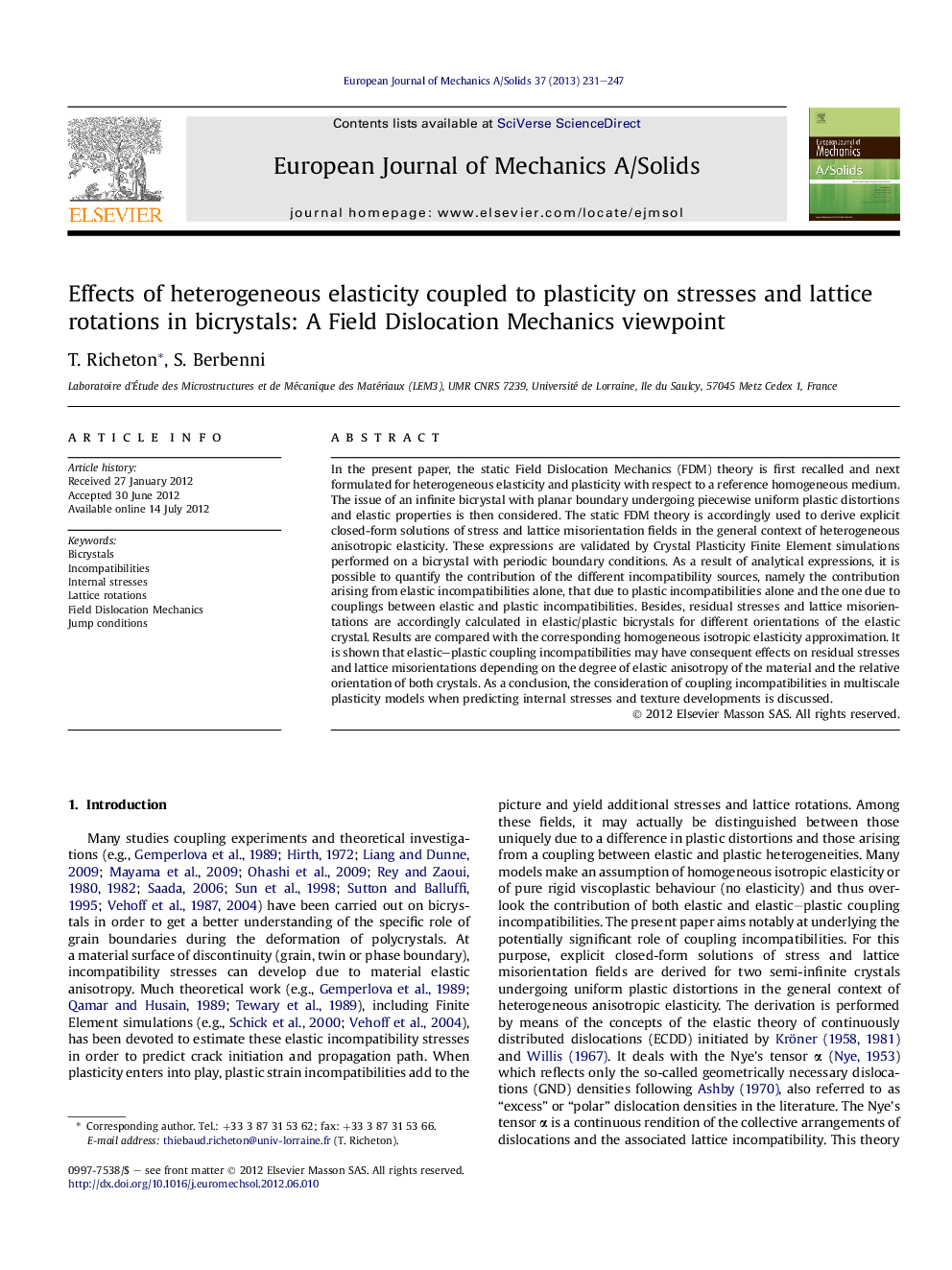| Article ID | Journal | Published Year | Pages | File Type |
|---|---|---|---|---|
| 778033 | European Journal of Mechanics - A/Solids | 2013 | 17 Pages |
In the present paper, the static Field Dislocation Mechanics (FDM) theory is first recalled and next formulated for heterogeneous elasticity and plasticity with respect to a reference homogeneous medium. The issue of an infinite bicrystal with planar boundary undergoing piecewise uniform plastic distortions and elastic properties is then considered. The static FDM theory is accordingly used to derive explicit closed-form solutions of stress and lattice misorientation fields in the general context of heterogeneous anisotropic elasticity. These expressions are validated by Crystal Plasticity Finite Element simulations performed on a bicrystal with periodic boundary conditions. As a result of analytical expressions, it is possible to quantify the contribution of the different incompatibility sources, namely the contribution arising from elastic incompatibilities alone, that due to plastic incompatibilities alone and the one due to couplings between elastic and plastic incompatibilities. Besides, residual stresses and lattice misorientations are accordingly calculated in elastic/plastic bicrystals for different orientations of the elastic crystal. Results are compared with the corresponding homogeneous isotropic elasticity approximation. It is shown that elastic–plastic coupling incompatibilities may have consequent effects on residual stresses and lattice misorientations depending on the degree of elastic anisotropy of the material and the relative orientation of both crystals. As a conclusion, the consideration of coupling incompatibilities in multiscale plasticity models when predicting internal stresses and texture developments is discussed.
Graphical abstractFigure optionsDownload full-size imageDownload as PowerPoint slideHighlights► Infinite bicrystal with heterogeneous anisotropic elasticity and plasticity. ► Explicit closed-form solutions of stress and lattice misorientation fields. ► Elastic–plastic coupling incompatibilities may have consequent effects.
